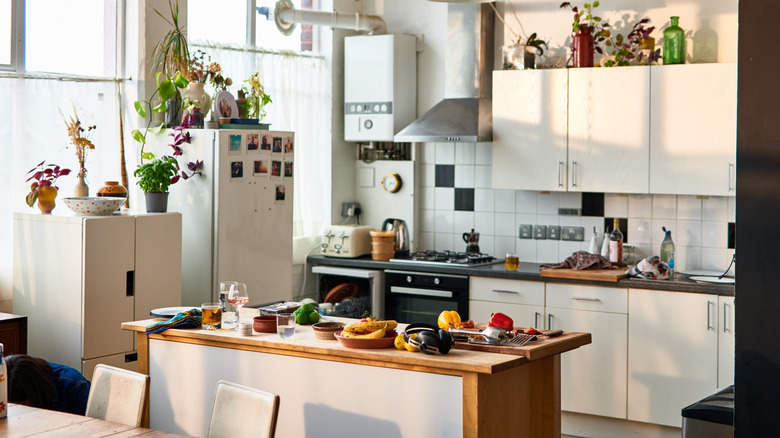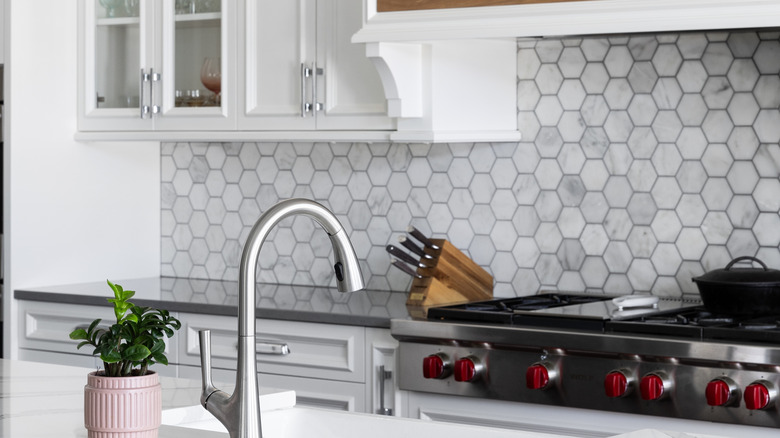Settling The Debate: Where Should Your Backsplash End?
We may receive a commission on purchases made from links.
Remodel or plan a new kitchen, and there is one debate that is never-ending — the backsplash placement. People often wonder, where should the backsplash end? Should it end at the countertop or at the edge of the cabinets? You must align the backsplash with the edge of the wall cabinets, which can create a seamless vertical line that feels refined and purposeful. Or you can end it at the countertop if you desire, especially if you're concerned about protecting the wall.
When you picture that design, you'll notice that the alignment of the backsplash at the edge of the cabinets frames the limited space and adds balance, all while making the tile appear like a part of the architecture rather than feeling like an afterthought. On the other hand, stopping at the countertop edge may introduce an abrupt break that can possibly look unfinished.
For anyone who is looking for a timeless and classic style, a backsplash that ends at the cabinet edge is the clear winner. And if your kitchen is a cabinet-less one, then this new backsplash trend of taking your backsplash to cover the entire wall (up to the ceiling) might be something you'd want to try. These backsplash tiles work well in both modern and traditional kitchens because they respect the overall structure of the room. It delivers on the design harmony, for sure, but the decision also raises practical questions about installation and durability, which is where the other side of the debate comes in.
Practical choices - clean lines versus bold statements
The cabinet placement has won the design debate. But beyond design, a cabinet-aligned backsplash placement also wins when it comes down to execution. It looks clean, and the installation is also simple. That space between the countertop and the cabinets or other guiding feature acts as a natural template, making DIYing a kitchen backsplash easy. It also makes measurements more predictable, reduces any awkward cutting of tiles, and limits the need for metal edging or decorative trim to finish exposed sides. Less complexity equals faster installation and fewer errors.
Still, function is equally important. Without a built-in stopping point, like when opting for a countertop-ending backsplash, you'll need to carefully consider where the tile should end and how to finish the edges neatly. If you are DIYing the project and want to achieve a professional look, try finishing the edges with bullnose tiles for a seamless look – or trim pieces, or specialty edging strips like KTINITK Aluminum Tile Trim. You'll also want to factor in extra tile to account for the added surface area, along with the possibility of more detailed cuts around windows or corners, depending on how far past the cabinets you're extending.
One last thing to consider is the resale value. Buyers tend to notice the clean design lines more than bold statements, and backsplashes ending at the cabinet may increase the resale value of the house. But if this is your forever kitchen, then you can go for a design trend that matches the rest of the house. That said, experts suggest that the cleanest and most cohesive choice is to stop the backsplash at the edge of cabinets.

